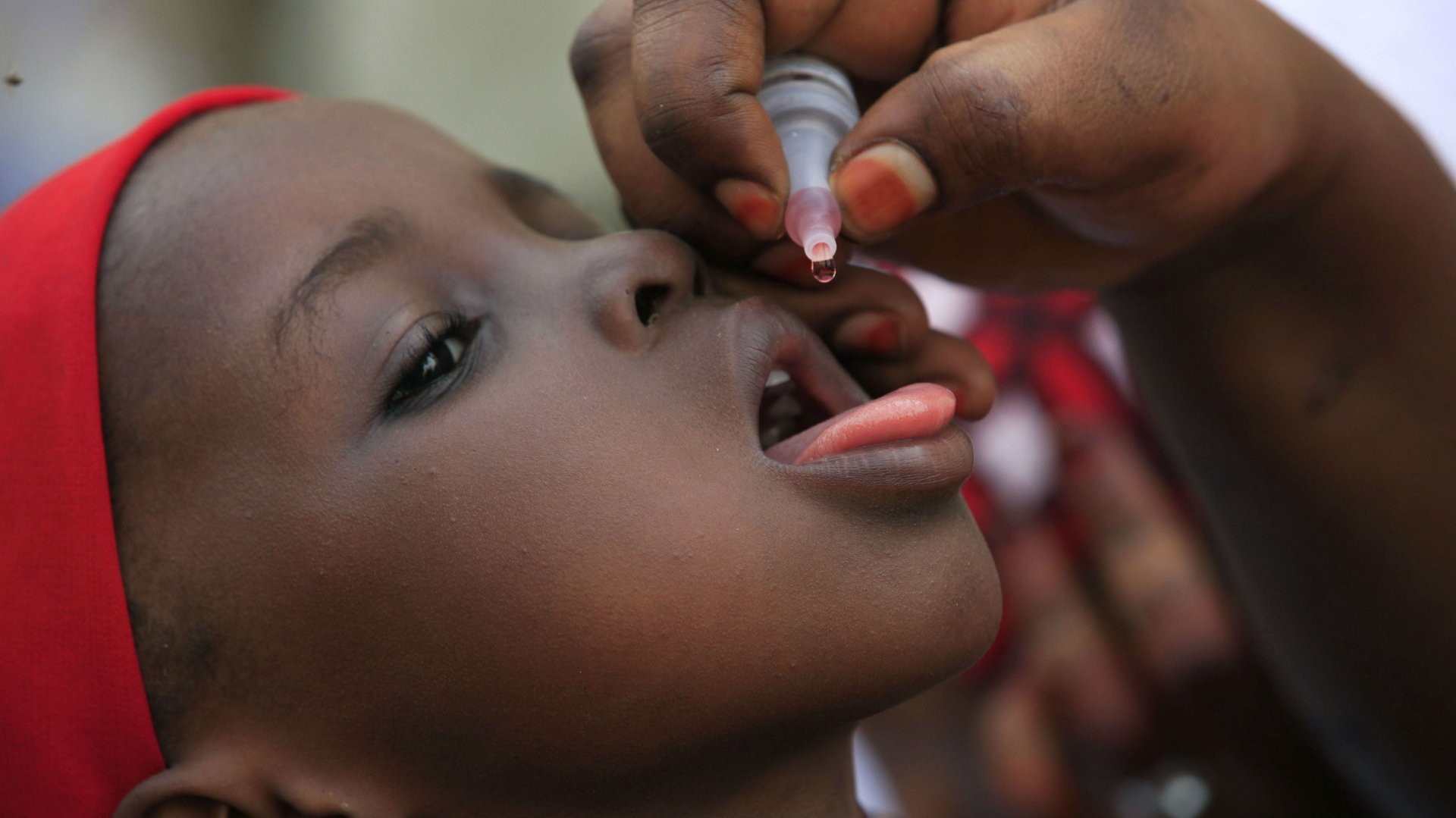The world’s poorest countries could finally wipe out polio—as long as the richest ones don’t bring it back
On July 24, 2015, it will be exactly one year since the last case of poliomyelitis was detected in Nigeria. Once that’s officially confirmed, the country will get off the list of areas where the wild polio virus is endemic—and with it, so will the entire African region.


On July 24, 2015, it will be exactly one year since the last case of poliomyelitis was detected in Nigeria. Once that’s officially confirmed, the country will get off the list of areas where the wild polio virus is endemic—and with it, so will the entire African region.
That will leave only Pakistan and Afghanistan on the endemic list. There, according to the World Health Organization (WHO) estimates, polio is on its way to being cornered; no new cases are expected in the first half of 2016.
It takes three years after the last case for a country to be declared fully polio-free (as opposed to just non-endemic), but at the current rate, we are looking at a polio-free world by 2020—46 years after the WHO first promoted a global immunization program. That would mean the end of a serious viral infection, mainly affecting infants up to two years old, which in 0.5% of cases results in muscle weakness and paralysis. And it would be only the third time humankind had successfully eradicated a contagious disease (after smallpox and rinderpest)—a huge achievement.
However, it’s too early to start celebrating.
Currently, according to the Global Polio Eradicating Intiative, 97% Nigerian children have had the full three-dose vaccination against polio. That’s a high enough percentage to keep the virus at bay. But as Oyewale Tomori, chairman of the expert review committee on polio eradication in Nigeria, told Quartz, “We [Nigeria] are out of the endemic countries list, we are not polio-free; one has to keep that in the back of the mind.”
According to Tomori, there are two things that could cause polio to come back in Nigeria: government complacency and religious extremism.
The government’s push to promote immunization campaigns—with the help of traditional leaders, both religious and secular—has made a difference since 2012. But its periodic loss of focus—during the presidential elections in 2011, for instance—has led to setbacks (see the chart below). Nigeria has seen “over 100 mass immunization campaign, because the quality wasn’t good,” Tomori told Quartz, noting that Ghana got the virus out in just 10 mass campaigns.
Meanwhile, in northern Nigeria, religious extremists led a mass boycott of polio vaccination in 2003. That, says Tomori, is perhaps the main reason why it took Nigeria longer than other African countries to eradicate polio. Though more mainstream Nigerian imams now support vaccination, the areas under Boko Haram control are at the greatest risk of a new outbreak. It’s hard to keep monitoring the population for new cases and conduct immunization drives, says Tomori, given the extremists’ opposition to them.
Ado Muhammad, director of the national polio eradication committee in Nigeria, told Quartz that internally displaced people who have fled from Boko Haram areas are given vaccinations, and that the government’s state of alert is high. “We are very conscious of the fact that there is a risk,” he said.
Like Nigeria, both Pakistan and Afghanistan have political instability and religious extremists (the Taliban) who oppose vaccination. But these are not the only things that put the world at risk of a polio resurgence. In the US, where there has not been a reported polio case in over 30 years, the memory of how tragic the disease can be is not acting as a deterrent, and immunization rates are dropping. In certain schools, according to the California Department of Public Health, over 60% of kids haven’t been fully vaccinated. In Europe, too, some countries have dropped their guard and are vulnerable to imported polio cases, especially from Syria where the civil war caused a spike in new cases (though a fresh vaccination drive seems to be bringing the disease back under control).
It would be tragically ironic if, just as countries like Nigeria finally defeat polio, the rich world allows it to come back. ”As long as there is a [polio] virus anywhere in the world we should continue to do immunizations,” Carol Pandak, the director of Rotary’s PolioPlus program, told Quartz.